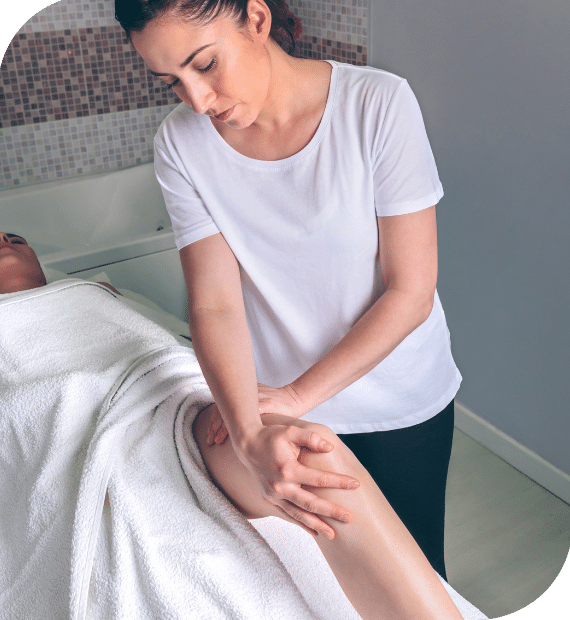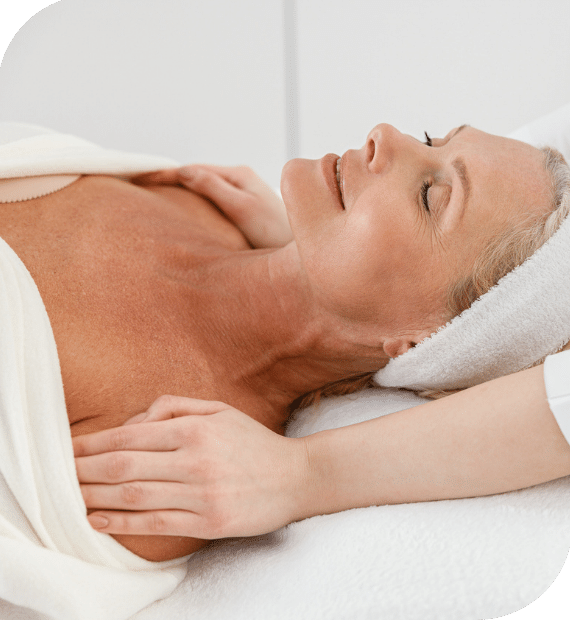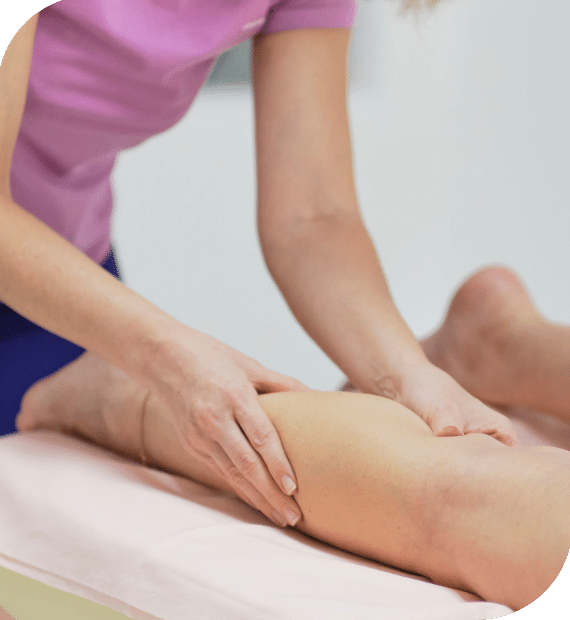
Wellness And Therapy Guides
Lymphatic Massage & Drainage
What is Lymphatic Massage & Drainage?
Lymphatic drainage, also known as manual lymphatic drainage (MLD), is a gentle massage technique designed to enhance the circulation of lymphatic fluid throughout the body. The lymphatic system plays a crucial role in immune function and the removal of waste products, toxins, and excess fluid from tissues.
Unlike the cardiovascular system, which is powered by the heart’s pumping action, the lymphatic system relies on muscle contractions to propel lymph fluid through its network of vessels.
Using light, rhythmic movements to stimulate lymphatic flow, lymphoedema massage therapists monitor, treat and massage your lymphoedema site within a consistent therapeutic program.

Lymphatic drainage, also known as manual lymphatic drainage (MLD), is a gentle massage technique designed to enhance the circulation of lymphatic fluid throughout the body. The lymphatic system plays a crucial role in immune function and the removal of waste products, toxins, and excess fluid from tissues.
Unlike the cardiovascular system, which is powered by the heart’s pumping action, the lymphatic system relies on muscle contractions to propel lymph fluid through its network of vessels.
Using light, rhythmic movements to stimulate lymphatic flow, lymphoedema massage therapists monitor, treat and massage your lymphoedema site within a consistent therapeutic program.
Benefits for People Living With Cancer

Lymphoedema, often a result of damage or lymph node removal during cancer surgery, can lead to swelling and discomfort. Lymphatic drainage is recognised as an effective therapy to manage this condition.
Lymphatic drainage massage can help alleviate lymphoedema, as well as less severe instances of swelling, by encouraging the circulation of fluid through the lymphatic vessels.
The gentle, gliding motions promote the movement of fluid away from swollen areas, offering relief and improving overall comfort.
Lymphatic drainage is often integrated into comprehensive lymphoedema management therapeutic programs. This may be complemented by the use of compression bandages or specialised garments to further control swelling.
While lymphoedema is a lifelong condition once it develops, lymphatic drainage can play a crucial role in its management. Beyond lymphoedema, lymphatic drainage helps to reduce swelling, promote detoxification, and support immune function.
Benefits for People Living With Cancer
Lymphoedema, often a result of damage or lymph node removal during cancer surgery, can lead to swelling and discomfort. Lymphatic drainage is recognised as an effective therapy to manage this condition.
Lymphatic drainage massage can help alleviate lymphoedema, as well as less severe instances of swelling, by encouraging the circulation of fluid through the lymphatic vessels.
The gentle, gliding motions promote the movement of fluid away from swollen areas, offering relief and improving overall comfort.
Lymphatic drainage is often integrated into comprehensive lymphoedema management therapeutic programs. This may be complemented by the use of compression bandages or specialised garments to further control swelling.
While lymphoedema is a lifelong condition once it develops, lymphatic drainage can play a crucial role in its management. Beyond lymphoedema, lymphatic drainage helps to reduce swelling, promote detoxification, and support immune function.
What to Expect from Your Session

Your session will typically begin with a thorough discussion of your medical history and specific concerns regarding swelling or lymphoedema.
You’ll be asked to partially disrobe and you’ll be provided with towels for modesty. Then, you’ll lie down on a comfortable massage table for the treatment. Using gentle and rhythmic strokes, your therapist will encourage the movement of lymph fluid towards the thoracic duct, facilitating its return to the bloodstream.
After a lymphatic massage, clients often describe experiencing a significant sense of wellbeing. Treatment follows a gradual and monitored approach, with therapists continuously assessing and overseeing the process, and clients wearing compression garments and bandages as part of their care.
What to Expect from Your Session
Your session will typically begin with a thorough discussion of your medical history and specific concerns regarding swelling or lymphoedema.
You’ll be asked to partially disrobe and you’ll be provided with towels for modesty. Then, you’ll lie down on a comfortable massage table for the treatment.
Using gentle and rhythmic strokes, your therapist will encourage the movement of lymph fluid towards the thoracic duct, facilitating its return to the bloodstream.
After a lymphatic massage, clients often describe experiencing a significant sense of wellbeing. Treatment follows a gradual and monitored approach, with therapists continuously assessing and overseeing the process, and clients wearing compression garments and bandages as part of their care.
References
- How to perform a lymphatic drainage massage | medicalnewstoday.com
- Lymphatic system | betterhealth.vic.gov.au
- Lymphoedema | healthdirect.gov.au
- Lymphatic Drainage Massage | brisbanelivewellclinic.com.au
- Lymphatic Drainage | SoulAdvisor
- Efficacy of complete decongestive therapy and manual lymphatic drainage on treatment-related lymphedema in breast cancer | ScienceDirect
- An overview of manual lymphatic drainage for lymphedema | Massage magazine
- Manual Lymphatic Drainage (MLD): The Vodder Technique | brmh.com.au

